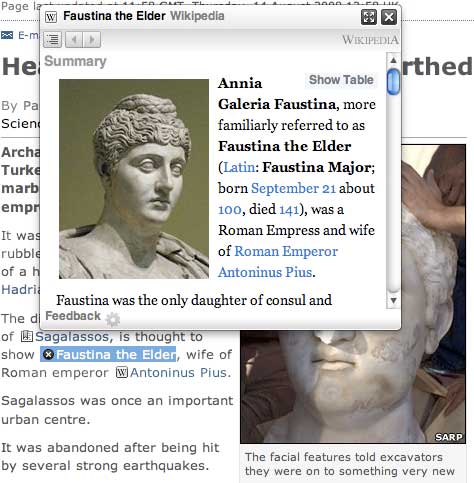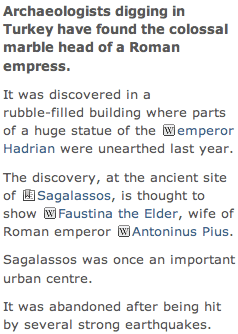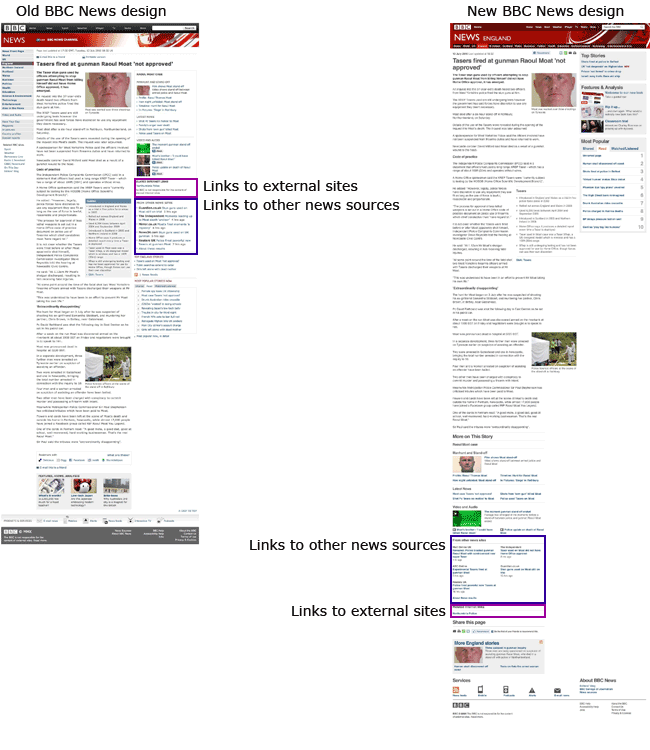How BBC News has integrated external links into articles
Having already blogged about the BBC this morning, today I wanted to draw to a close an unexpectedly lengthy set of blog posts triggered by Patrick Smith's "Link to the past: why do some news sites STILL not link out in 2010?" with a look at a couple of ways that BBC News has used external links in the past.
One of the earliest attempts to do this automatically was the 'Newstracker' service. In 2004 I went to a presentation in Bush House by a couple of the BBC News team talking about how the product worked and why it had been adopted.
At the time I was very much struck by the fact that people had complained to BBC News about the presence of external links to other news sources on the page. In some sections of the audience there was a feeling that this was tantamount to the BBC carrying advertising for other websites, or a TV presenter suggesting you "turn over to ITV now for a different view on this story" mid-bulletin.
In August 2008, the site trialled the use of Apture to allow users to 'explore background material without leaving the page'.

The experiment had a couple of interesting aspects to it.

For one thing it relied on JavaScript, meaning that it wasn't available to all users. Iain Tatch commented on my blog post at the time:
"This is ever so strange. The thing that made the web so different -- and caused it to boom to fast -- compared to other information systems on the internet, was the fact that it was built around hypertext. Right from the very beginning, you've been able to embed links to another site into your web pages, and I'm not quite sure why News Online felt they had to invent a whole new Javascript-based pseudo-popup way to handle links, rather than using the venerable <a> tag. Admittedly the eye-candy factor is fairly high, but it totally excludes anyone who isn't using JavaScript on their browser, and I suspect it bamboozles screen-readers and the like, too."
As well as the non-standard way of linking to the material, the icons broke up the flow of the body copy - something I talked about last week when blogging about the user experience of external links on news websites.

Jonathan Austin blogged about the results of the trial in 2009. The reception seemed broadly positive.
"Over 1200 people used this to give us feedback during the two weeks, which we think is quite a high response for such a limited piece of work. Over 90% of those that responded said that they found Apture useful. This was an unexpected result, even considering that the opt-in nature of the trial favoured early adopters."
Obviously, the BBC has not gone on to adopt the system more widely. In his blog post, Jonathan said:
"We've decided to do go back to basics and look again at the fundamentals of linking in news stories. When the BBC News website started in 1997 we placed background links to the side of the article instead of inline, for technical and user experience reasons. We haven't revisited that decision in any significant way until now. In 2009, we're going to be refreshing how we markup our stories. We will discuss the details of this project in more detail here later. But this will give us a rare opportunity to improve the way we express links."
So far, with the recent BBC News redesign, it remains the fact that external links are kept away from the body of an article. Actually, arguably they have been demoted, since whereas they used to appear in the side panel of a story, they now appear at the foot of the page. This diagram, showing the same story in the two designs, illustrates the point.

I presume the BBC tested the position of external links and decided having them in the sidebar took traffic away from the site compared to when the links were placed in the footer.
The new BBC News redesign is a very definite demotion for external links, which is a great shame. I doubt that many people ever scroll down far enough to notice that they even exist, let alone click on them.